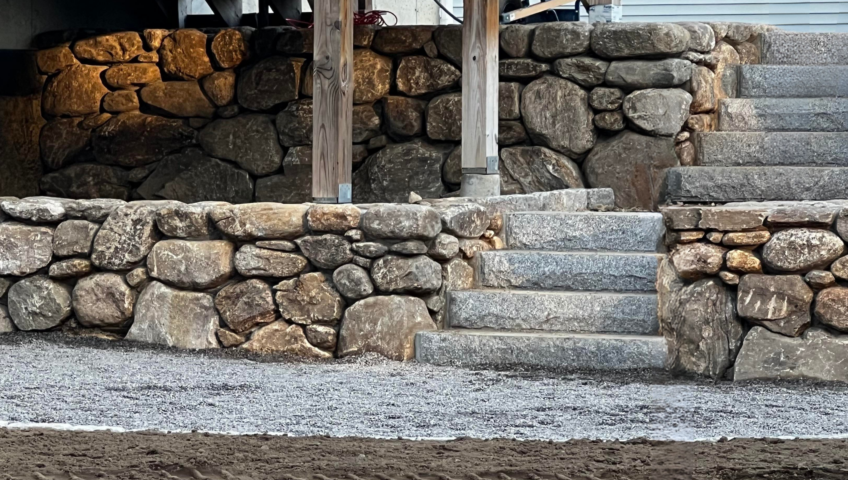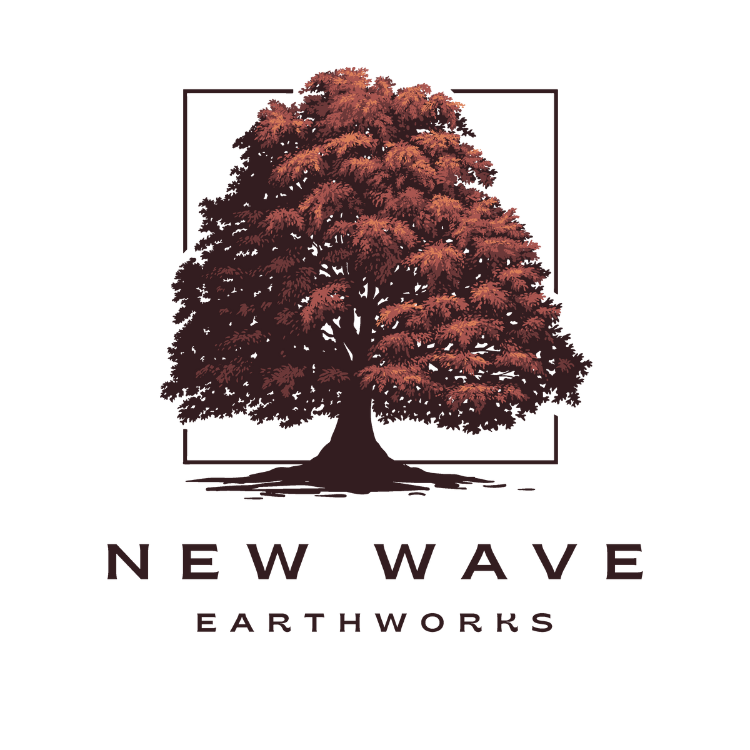When planning a new retaining wall or garden feature, you’ll quickly face one big question: Should you go for a dry stack retaining wall or a wet-laid stone wall? Both methods have their strengths. The best choice depends on your site, your style, and your goals.
Dry stack retaining walls use natural stones carefully stacked without mortar, while wet-laid stone walls rely on mortar for strength and permanence. For garden walls, planters, or low seating walls in waterlogged soil, a dry stack retaining wall might be all you need. But for mineral-rich soils, a wet-laid option could be the safer long-term choice.
Choosing the right method matters for the properties in the Lower Mainland, as the region has diverse, ever-changing, microclimates. In this article, we will break down the key differences, pros, and cons of each method so you can make the right decision for your property.
What Is a Dry Stack Retaining Wall?
A dry stack retaining wall is built by stacking stones without using mortar. Instead, stability comes from the precise placement and interlocking of the stones. This method dates back centuries and remains popular for its rustic charm, flexibility, and lower environmental impact.
In BC’s wetter climate, the natural drainage and flexibility of dry stack walls make them ideal for properties with freeze-thaw cycles or shifting soils. These conditions are common across the Fraser Valley and Metro Vancouver areas.
Dry Stack Retaining Wall: Pros and Cons
Let’s discuss the 5 benefits of dry stack walls first:
- Natural Drainage: Gaps between stones allow water to pass through easily. This reduces pressure and prevents erosion behind the wall.
- Flexible in Movement: Dry stack walls can adjust slightly to changes in the ground. This makes them well-suited to areas that experience frost heave or soil movement.
- Rustic Beauty: These walls have a timeless, organic look that blends beautifully into natural landscapes.
- Cost-Effective: Since no mortar is needed, these walls typically use fewer materials and require less labour.
- DIY-Friendly for Small Jobs: With some research and planning, you can build a semi-decent wall yourself. It won’t be perfect or long-lasting, but you can get it done.
You’ll experience the following 3 shortcomings with dry stack walls:
- Limited Height: Most dry stack walls work best at 3 feet or less. Taller versions require expert engineering.
- Requires Occasional Maintenance: Stones may shift over time and need to be repositioned or stabilized.
- Not Ideal for All Sites: Steep slopes or high-pressure soil conditions may exceed the limits of a dry stack wall.
What Is a Wet-Laid Stone Wall?
A wet-laid stone wall is built using mortar to bind the stones together. The mortar fills the gaps between the stones and holds them firmly in place. This method creates a strong, solid structure that is capable of handling higher loads and more complex applications.
Wet-laid walls are often chosen for formal landscapes, load-bearing walls, walkways, or when a smooth and uniform look is preferred. In BC’s wetter regions like Burnaby or Port Moody, wet-laid construction is often used to combat erosion and provide reliable long-term support.
Wet-Laid Stone Walls: Strengths and Weaknesses
In wetter parts of BC like Burnaby or Port Moody, these walls provide reliable support when paired with proper drainage systems. You’ll notice these 5 advantages:
- High Load Capacity: Great for retaining walls that need to support heavy soil or structures.
- Long-Lasting Durability: The mortar provides a firm hold and can keep the wall stable for many years.
- More Stone Options: Mortar allows you to use irregularly shaped stones that would be hard to stack dry.
- Low Maintenance: Fewer gaps between stones mean less weed growth and movement.
- Clean and Polished Look: The mortar gives the wall a more uniform and finished appearance.
When it comes to wet-laid walls, you’ll have to deal with these 4 issues:
- Less Natural Drainage: You need to build proper drainage systems to prevent water pressure from damaging the wall.
- Higher Cost: Mortar and skilled labor increase the price.
- Not Flexible: These walls can crack if the ground moves significantly.
- Not Suitable for DIY: Mixing and applying mortar properly takes skill. It’s best to hire a professional for this type of project.
Which Is Best for the Lower Mainland?
To help you choose, here’s a side-by-side comparison:
| Feature | Dry Stack Retaining Wall | Wet-Laid Stone Wall |
| Drainage | Excellent | Requires added drainage |
| Strength | Moderate (up to 3 ft) | High (up to 6 ft or more) |
| Aesthetic | Rustic and natural | Clean and formal |
| DIY Friendly | Yes (for small walls) | No |
| Flexibility | Adapts to soil movement | More rigid |
| Climate Fit | Ideal for freeze-thaw cycles | Best for stable soil conditions |
If you’re building a garden wall, planter, or low seating wall in Langley or Mission, a dry stack retaining wall might be all you need. But if you’re reinforcing a slope in Coquitlam or building a structural wall in Richmond, a wet-laid option could be the safer long-term choice.
Other Considerations
You’ll also have to think of these 3 issues:
- Permits: Walls over 1.2 meters (about 4 feet) may need municipal approval or engineering, especially in urban areas.
- Environmental Footprint: Dry stack walls typically use fewer processed materials. Choosing local stones can also help reduce transportation emissions.
- Design Goals: If you’re going for a natural garden vibe, dry stack is the way to go. If you prefer a more refined and formal landscape, wet-laid may be a better fit.
New Wave Earthworks. Experts in Hardscaping.
At New Wave Earthworks, we combine expertise with a commitment to quality. We have nearly a decade of experience working on civil, environmental, watershed, and landscape construction projects in Greater Vancouver. We understand client needs, and project demands, and only use the best materials available for affordable rates.
Ready to get started? Contact New Wave Earthworks today for a consultation and see how Allan Block walls can transform your property. Call us at (604) 855-2603 or mail us at info@newwaveearthworks.com to get a free quote today!
Conclusion
A dry stack retaining wall is a beautiful and functional solution that works well with the natural terrain and climate of the Lower Mainland. But sometimes, a wet-laid wall is the better option when extra strength, durability, or height is required. If you’re unsure, speak with a local expert who understands the soil and weather patterns unique to BC.


